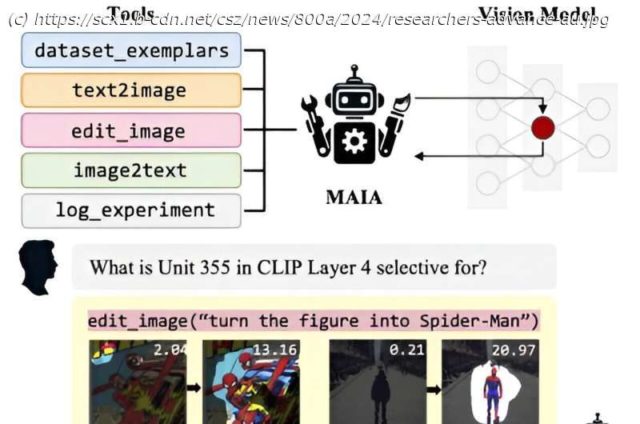As artificial intelligence models become increasingly prevalent and are integrated into diverse sectors like health care, finance, education, transportation, and entertainment, understanding how they work under the hood is .
As artificial intelligence models become increasingly prevalent and are integrated into diverse sectors like health care, finance, education, transportation, and entertainment, understanding how they work under the hood is critical. Interpreting the mechanisms underlying AI models enables us to audit them for safety and biases, with the potential to deepen our understanding of the science behind intelligence itself.
Imagine if we could directly investigate the human brain by manipulating each of its individual neurons to examine their roles in perceiving a particular object. While such an experiment would be prohibitively invasive in the human brain, it is more feasible in another type of neural network: one that is artificial. However, somewhat similar to the human brain, artificial models containing millions of neurons are too large and complex to study by hand, making interpretability at scale a very challenging task.
To address this, MIT Computer Science and Artificial Intelligence Laboratory (CSAIL) researchers decided to take an automated approach to interpreting artificial vision models that evaluate different properties of images. They have developed „MAIA“ (Multimodal Automated Interpretability Agent), a system that automates a variety of neural network interpretability tasks using a vision-language model backbone equipped with tools for experimenting on other AI systems.
The research is published on the arXiv preprint server.
„Our goal is to create an AI researcher that can conduct interpretability experiments autonomously. Existing automated interpretability methods merely label or visualize data in a one-shot process. On the other hand, MAIA can generate hypotheses, design experiments to test them, and refine its understanding through iterative analysis“, says Tamar Rott Shaham, an MIT electrical engineering and computer science (EECS) postdoc at CSAIL and co-author on a new paper about the research.
„By combining a pre-trained vision-language model with a library of interpretability tools, our multimodal method can respond to user queries by composing and running targeted experiments on specific models, continuously refining its approach until it can provide a comprehensive answer.“
The automated agent is demonstrated to tackle three key tasks: It labels individual components inside vision models and describes the visual concepts that activate them, it cleans up image classifiers by removing irrelevant features to make them more robust to new situations, and it hunts for hidden biases in AI systems to help uncover potential fairness issues in their outputs.
„But a key advantage of a system like MAIA is its flexibility“, says Sarah Schwettmann, Ph.
Start
United States
USA — software Multimodal agent can iteratively design experiments to better understand various components of...






